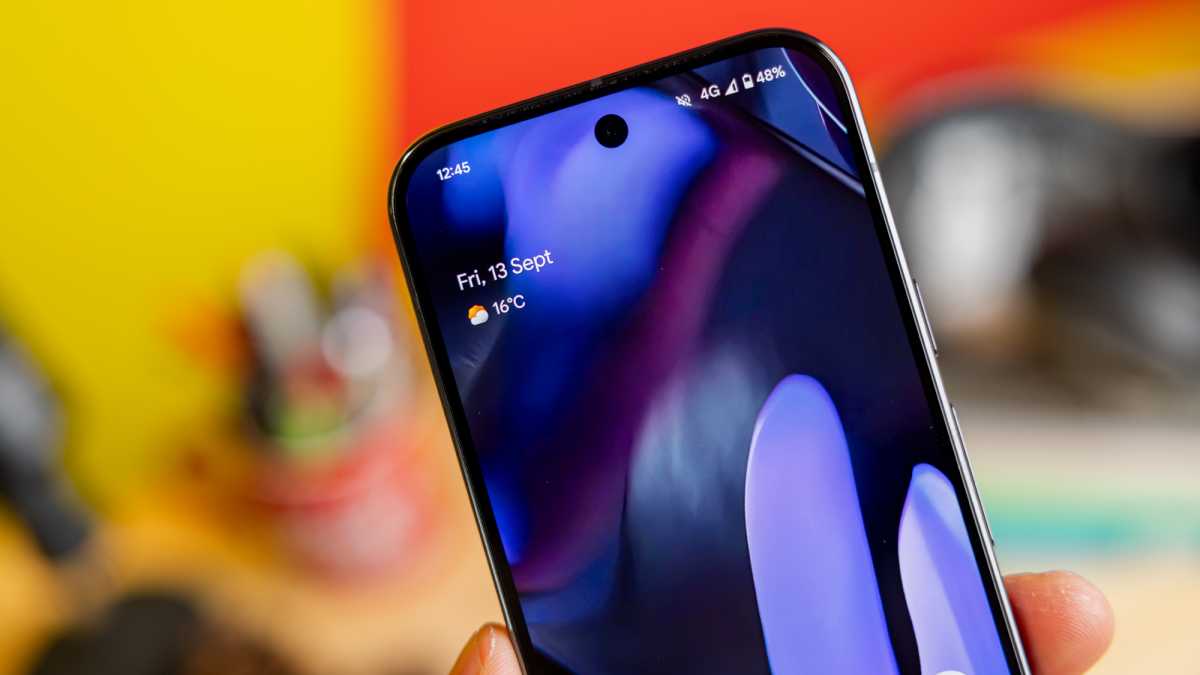Expected to power the Pixel 10 series
Google’s upcoming Tensor G5 chipset might mark a significant shift in the company’s approach to mobile silicon.
Having relied on Samsung’s Exynos architecture and fabrication processes since the launch of the first Tensor, Google is likely to finally produce a fully in-house designed chip, manufactured by TSMC.
Here’s everything we know so far.
When will the Google Tensor G5 launch?
The Google Tensor G5 is expected to debut with the Pixel 10 series, likely to launch in late 2025.
Given the standard annual release schedule for Pixel devices, Google is expected to introduce the Pixel 10 around October 2025.

Dominik Tomaszewski / Foundry
This timeline aligns with reports that Google has begun testing early samples of the Tensor G5, which were recently discovered through shipping records.
Which phones will use the Google Tensor G5?
The Tensor G5 will make its debut in Google’s Pixel 10 lineup, succeeding the current Pixel 9 series, which launched in August 2024.
The Pixel 10 series is expected to feature the standard Pixel 10, the Pixel 10 Pro, the Pixel 10 Pro XL and the Pixel 10 Pro Fold.

Luke Baker
With the Tensor G5, Google aims to address criticisms of previous Tensor models, particularly regarding thermals, battery efficiency, and raw performance.
This shift to an in-house chip design and TSMC manufacturing should allow Google to better optimise its Pixel 10 series with improved performance and efficiency, something hindered by previous reliance on Samsung’s foundry technologies.
What specs and features will the Google Tensor G5 have?
Over the past few months, Android Authority has released two extensive reports (first report, second report), one of which comes directly from Google’s gChips division, giving us some details about Google’s future chipsets features.
Here’s a breakdown of the most anticipated specs and features of the Tensor G5
TSMC’s 3nm N3E fabrication process
One of the most significant changes for the Tensor G5, codenamed ‘laguna,’ is its fabrication at TSMC’s 3nm N3E node.
This is the same advanced node manufacturing process used in Apple’s A18 Pro chip, which powers the iPhone 16 Pro and the iPhone 16 Pro Max, marking a leap forward in efficiency and performance.

Dominik Tomaszewski / Foundry
Previously, Tensor chips faced performance issues tied to Samsung’s process nodes, which lagged behind TSMC’s offerings.
The 3nm process coould enable higher performance and better power efficiency for the G5, making it competitive with other leading mobile chipsets.
CPU configuration
The Tensor G5 might feature an updated CPU cluster designed to balance power and performance. This configuration would include one Arm Cortex-X4 prime core, a high-performance core intended for demanding tasks.
The mid-tier is said to consists of five Cortex-A725 cores, which enhance multi-core performance, especially useful for multitasking. Finally, two efficiency-focused Cortex-A520 cores might handle low-power tasks, which helps conserve battery life when the phone isn’t under heavy load.
This new configuration, emphasising a larger mid-core cluster, is expected to yield a noticeable boost in multi-core performance and day-to-day efficiency, a focus for Google.

Chris Martin / Foundry
Recently, a mysterious device believed to feature the Tensor G5, codenamed ‘Google Frankel,’ appeared on Geekbench (via GSMArena) scoring 1323 points in a single-core and 4004 points in a multi-core test. As a reminder, the Pixel 9 scored 4185 points in our Geekbench 6 multi-core test.
The leaked specs align closely with the expected Tensor G5’s specs, sporting a CPU configuration with one prime core (up to 3.40 GHz), five performance cores (up to 2.86 GHz), and two efficiency cores (up to 2.44 GHz).
However, the listing shows a Power VR graphics unit instead of the expected Imagination Technologies DXT-48-1536 GPU. Since Power VR is also from Imagination Technologies, this discrepancy might be due to early testing stages, and the Geekbench scores should be viewed with caution as they may not reflect the chip’s final performance.
GPU and gaming
For the first time in the Tensor lineup, Google might switch to an Imagination Technologies GPU, specifically the dual-core IMG DXT-48-1536 running at 1.1 GHz.
This GPU upgrade could introduce ray tracing, a first for Google’s Tensor chipsets, which will enable more realistic graphics and smoother gameplay experiences in mobile gaming.

Luke Baker
Furthermore, the GPU might include virtualisation support, allowing it to handle accelerated graphics in virtual machines.
This addition aligns with Google’s broader focus on virtualised applications and productivity tools, where high-performance graphics can enhance functionality.
Enhanced AI
The Tensor G5 is expected to see moderate improvements in AI processing with an upgraded TPU (Tensor Processing Unit) that enhances machine learning capabilities by approximately 14% over its predecessor.
This TPU might also be equipped with embedded RISC-V cores, which would allow for custom operations, making the TPU more versatile and capable of handling diverse on-device machine learning tasks.

Chris Martin / Foundry
These additions, along with the TPU’s support for on-device training, could expand the ways in which the Pixel 10 series learns and adapts to user preferences over time, helping the Pixel line further integrate real-time personalisation.
Integrated Fan-Out Package on Package (InFO_PoP)
The Tensor G5 is said to use TSMC’s InFO_PoP technology to integrate RAM directly on top of the chipset, enhancing thermal management and electrical efficiency.
This setup could allow for thinner 1.16mm packaging and help in reducing overall power consumption while maintaining performance.
The Pixel 10 series is expected to include 16GB of RAM, an increase from previous Pixel models, allowing for more efficient multitasking and quicker response times.

Dominik Tomaszewski / Foundry
This is all we currently know about Google’s Tensor G5. We’ll update this article when we learn something new.
In the meantime, you can check out what the current flagship Pixel 9 series has to offer, as well as the history of Pixel phones, where we cover how Google’s phones have evolved over the years.





